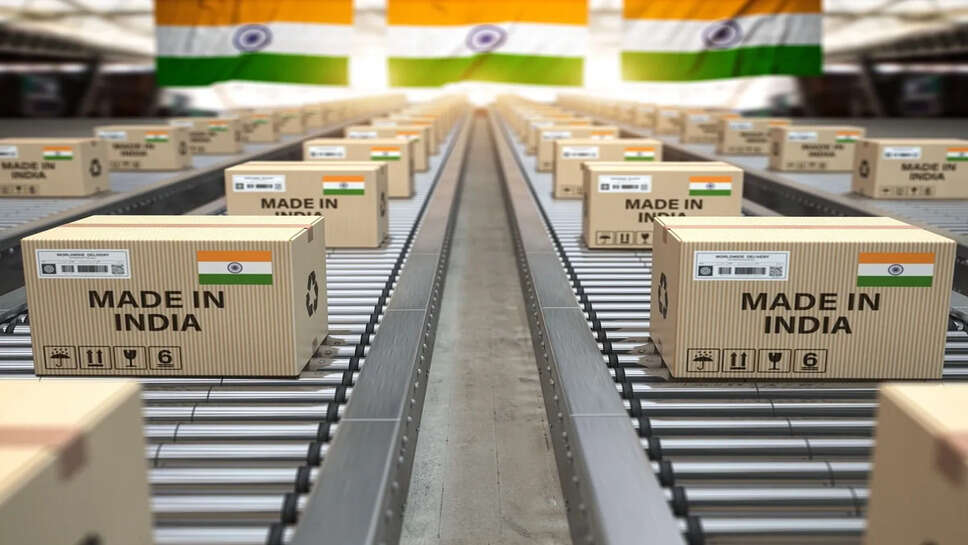Tirupur, Noida, Surat Units Halt as US Tariffs Bite Into Textile Exports

The announcement of additional tariffs on textile imports by the United States has sent shockwaves through India’s garment industry, forcing several manufacturing units in Tirupur, Noida, and Surat to suspend production temporarily. Exporters, already grappling with shrinking margins, volatile raw material costs, and intense global competition, now face a daunting new challenge that threatens the livelihood of thousands of workers and the stability of one of India’s most vibrant export-driven sectors.
Tariffs That Changed the Game
The notification from Washington late last week outlined additional import duties on a range of textile and apparel products, citing the need to “balance trade deficits” and “protect domestic manufacturing.” For India, the world’s second-largest textile exporter, the move comes as a severe blow. The US accounts for nearly 30% of India’s apparel exports, making it one of the most critical markets for producers in Tamil Nadu’s Tirupur knitwear hub, Uttar Pradesh’s Noida garment belt, and Gujarat’s Surat fabric cluster.
With the imposition of duties, exporters say the price competitiveness of Indian products in the American market has been eroded almost overnight. “We operate on razor-thin margins. A sudden tariff hike leaves us with no room to maneuver. Buyers are already hesitant, and many consignments are being renegotiated or outright canceled,” a Tirupur-based exporter explained.
Production Comes to a Standstill
In Tirupur, often referred to as the “knitwear capital of India,” units that specialize in T-shirts, sportswear, and children’s garments have halted operations, citing uncertainty in fresh orders. The cluster, which employs over six lakh workers directly and indirectly, had just begun recovering from disruptions caused by raw material inflation and shifting global demand patterns.
Noida’s garment exporters face a similar predicament. Several medium-sized factories, catering largely to US-based retailers and fashion chains, have put production on pause until clarity emerges on order volumes and revised pricing structures. “We cannot keep stockpiling unsold goods. Our units depend on timely shipments to maintain cash flows. Right now, the risk is too high to continue,” said a factory owner in Noida’s Phase-II industrial area.
In Surat, a hub known for synthetic fabric and sarees but increasingly linked to global textile supply chains, the impact is equally severe. Traders say that many powerloom operators have cut shifts, anticipating reduced export-linked demand in the months ahead.
Exporters in Distress
Industry associations warn that the new tariffs could derail India’s export growth targets. Already battling stiff competition from Bangladesh and Vietnam—nations that enjoy preferential trade agreements with the US—India’s textile exporters may now find themselves squeezed out of critical supply chains.
Exporters note that American buyers are quick to shift sourcing to lower-cost markets. With additional tariffs making Indian products pricier, many fear a repeat of past trade shocks, where large-scale order diversions caused long-lasting damage to local industries.
An apparel exporter from Noida pointed out that several buyers had already reached out to suppliers in Bangladesh, which enjoys duty-free access under the US’s Generalized System of Preferences (GSP) framework. “Once buyers shift, regaining that business is extremely hard. It’s not just about pricing—it’s about trust, logistics, and long-term supply chain integration,” he said.
Worker Uncertainty Grows
The immediate fallout of production halts has been felt most acutely by workers. Daily wagers, contract laborers, and small-scale ancillary units are bearing the brunt as factories reduce shifts or close temporarily. In Tirupur, labor unions have expressed concern that prolonged disruptions could push thousands of workers into unemployment.
Many workers, who migrated from states like Odisha, Bihar, and West Bengal, depend entirely on steady wages from textile factories. “We don’t know if we will get salaries this month. The factory closed two days ago and told us to wait. How long can we wait?” asked a worker outside a shuttered unit in Tirupur.
The uncertainty extends to ancillary industries—dying units, packaging vendors, transporters, and logistics operators—who are all linked to the health of the textile sector.
Government Response Under Pressure
The Indian government now faces mounting pressure from industry representatives to initiate dialogue with Washington and negotiate relief. Calls for tariff exemptions, special trade arrangements, or retaliatory measures are growing louder. Trade analysts suggest that India may need to accelerate free trade agreement talks with the US or explore compensatory incentives for exporters to prevent large-scale business losses.
Officials in New Delhi, however, remain cautious, stressing that international negotiations take time and require careful balancing of interests. In the interim, exporters are demanding immediate relief measures such as credit support, extension of duty drawback benefits, and subsidized shipping costs to maintain competitiveness in non-US markets.
The Road Ahead: Diversification and Adaptation
While the shock from the tariff hike is undeniable, industry leaders argue that the crisis may push India’s textile sector toward diversification. Over-reliance on the US market has long been flagged as a structural risk. Now, with exports to the EU, Middle East, and Latin America growing slowly, many see the present turmoil as a wake-up call to expand into new geographies.
Some exporters are also turning their attention to the domestic market, where demand for branded apparel and technical textiles is steadily rising. However, scaling back from exports to focus on domestic sales will not be easy, given the volume differences and competitive dynamics.
Technology-driven efficiency improvements, automation, and supply chain integration are also being touted as medium-term solutions. “We must shift from being purely cost-driven to value-driven exporters. That means focusing on sustainability, design innovation, and higher-quality segments where tariffs matter less,” said an exporter association leader.
A Test of Resilience
For now, though, the textile clusters of Tirupur, Noida, and Surat remain in limbo. Production lines are silent, workers anxious, and exporters unsure of the future. The mood on the ground is one of resilience mixed with fear. Many entrepreneurs recall past crises—global financial downturns, currency fluctuations, pandemic shutdowns—that tested the sector’s survival instincts.
Yet, the present tariff shock feels different because it directly alters the economics of India’s engagement with its most important export market. Whether the government can negotiate a reprieve, or exporters can adapt quickly to shifting demand, remains uncertain.
What is clear, however, is that the tariff notification has exposed the vulnerabilities of India’s textile export model. For an industry that has long been the backbone of employment and foreign exchange earnings, the current disruption is more than just a temporary hurdle—it is a call for transformation.
